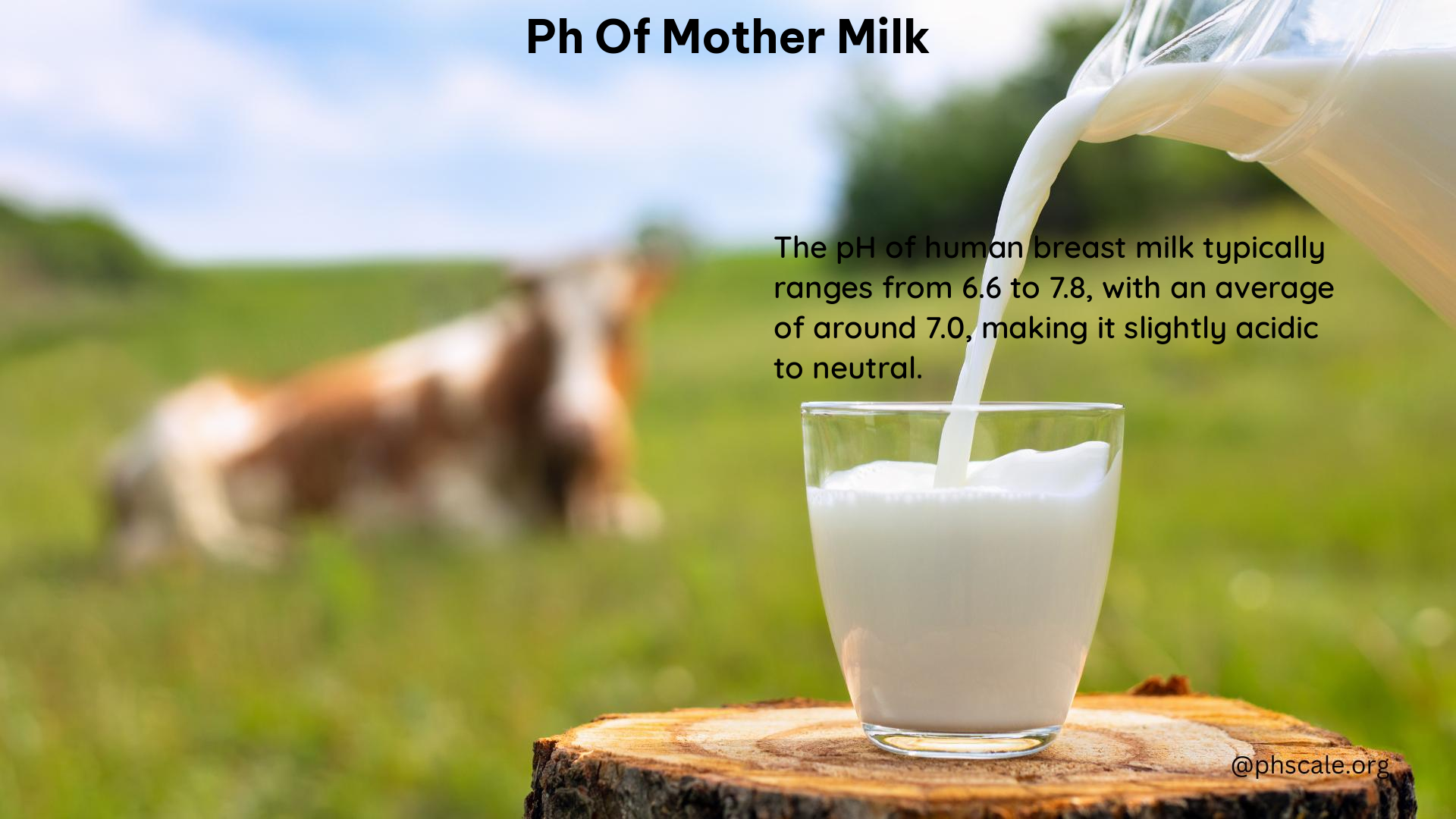The pH of mother’s milk is a crucial factor in maintaining the overall health and well-being of infants. As a slightly acidic fluid, the pH of mother’s milk plays a vital role in various aspects of infant development, from digestion to immune function. In this comprehensive blog post, we will explore the intricacies of the pH of mother’s milk, its range, the factors that influence it, and the importance of maintaining a healthy balance.
The pH Range of Mother’s Milk
The pH of mother’s milk is not a static value but rather a dynamic range that fluctuates throughout the different stages of lactation. Understanding this range is essential for healthcare professionals and mothers alike.
- Colostrum: The pH of colostrum, the first milk produced after childbirth, is around 7.45.
- Early Lactation: During the second week of lactation, the pH decreases to a nadir of 7.04.
- Established Lactation: From the third month postpartum and onwards, the pH remains between 7.0 and 7.1, gradually increasing to 7.4 by 10 months.
- Fortified Milk: The pH of fortified mother’s own milk (MOM) is slightly more acidic, with a pH of 6.60 ± 0.28, which is significantly higher than other milk types.
Factors Affecting the pH of Mother’s Milk

The pH of mother’s milk is influenced by various factors, including fortification, postpartum day, and maternal diet. Understanding these factors is crucial for maintaining a healthy pH balance.
Fortification
The pH of MOM varies depending on its fortification status. Fortified MOM has a higher pH compared to unfortified MOM.
Postpartum Day
The pH of MOM decreases over time, while the pH of fortified MOM increases over time.
Maternal Diet
Maternal vegetable and fiber intake can affect the pH of MOM. A balanced diet rich in these nutrients can help maintain a healthy pH.
Contaminants and Chemicals in Mother’s Milk
The pH of mother’s milk can also be influenced by the presence of certain contaminants and chemicals. Understanding these factors is crucial for maintaining the delicate balance of the milk’s pH.
Citrate
The concentration of citrate in milk is associated with changes in pH during lactation.
Fatty Acids
The concentration of saturated medium-chain fatty acids increases more rapidly than lactose during lactation, which can impact the pH.
Hydrogen Ions
The concentration of hydrogen ions in milk affects the pH and is associated with changes in citrate and fatty acid concentrations.
Maintaining a Healthy pH in Mother’s Milk
Ensuring a healthy pH in mother’s milk is essential for the well-being of the infant. Here are some strategies to help maintain a balanced pH:
Maternal Diet
Encouraging mothers to consume a balanced diet rich in vegetables and fiber can help support a healthy pH in their milk.
Proper Storage
Proper storage conditions, such as refrigeration or freezing, can help maintain the natural pH of mother’s milk.
Home Remedies for Maintaining Milk pH
In addition to the above strategies, there are some home remedies that can help mothers maintain a healthy pH in their milk:
- Dietary Changes: Encourage mothers to increase their intake of vegetables and fiber-rich foods to support a healthy pH in their milk.
- Proper Handling: Educate mothers on the importance of proper handling and storage of breast milk to maintain its natural pH.
By understanding the pH range of mother’s milk, the factors that influence it, and the strategies for maintaining a healthy balance, we can ensure that infants receive the optimal nutritional and health benefits from this precious fluid.
References
- Filatava, E. J., Shelly, C. E., Overton, N. E., et al. (2023). Human milk pH is associated with fortification, postpartum day, and maternal dietary intake in preterm mother-infant dyads. Journal of Perinatology, 43(1), 60–67. doi: 10.1038/s41372-022-01492-5
- Morriss, F. H., Jr., Brewer, E. D., Spedale, S. B., et al. (1986). Relationship of human milk pH during course of lactation to concentrations of citrate and fatty acids. Pediatrics, 78(3), 458–464. doi: 10.1542/peds.78.3.458
- Morriss, F. H., Jr., Brewer, E. D., Spedale, S. B., et al. (1986). Relationship of human milk pH during course of lactation to concentrations of citrate and fatty acids. Pediatrics, 78(3), 458–464. doi: 10.1542/peds.78.3.458
- Filatava, E. J., Shelly, C. E., Overton, N. E., et al. (2022). Human milk pH is associated with fortification, postpartum day, and maternal dietary intake in preterm mother-infant dyads. Journal of Perinatology, 43(1), 60–67. doi: 10.1038/s41372-022-01492-5.
